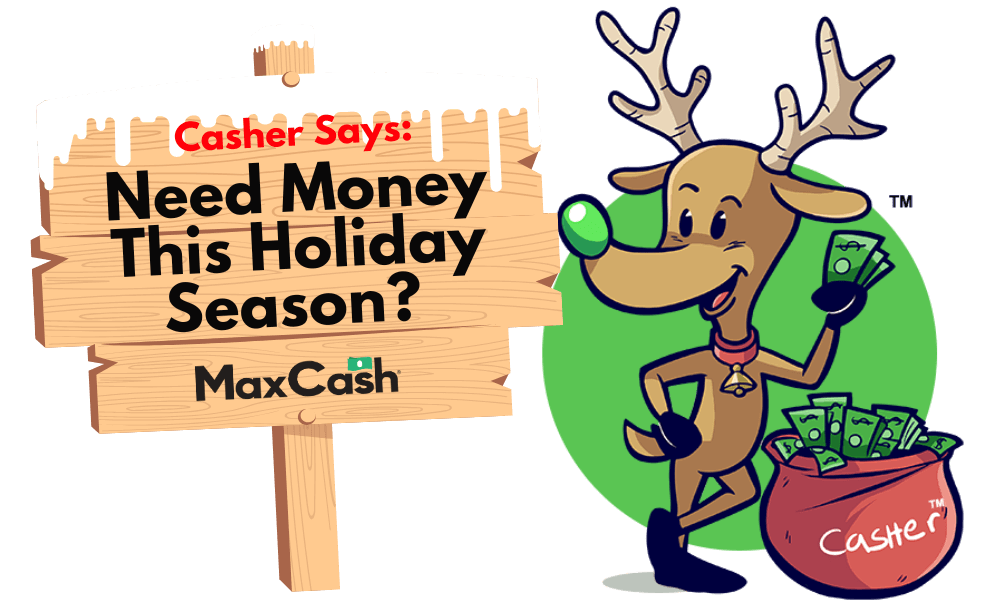
When looking into different credit card offerings, it’s important to take note of the credit card’s interest rates. There are several different types of rates that apply to a wide range of situations, and we here at Max Cash® want to help you identify which is which.
Want to know how credit card interest rates factor into your financial life? Then keep reading.
Defining APR
Chances are that, if you’ve ever worked with credit cards or loans, you’ve heard of the term APR. APR is the term used to refer to the different types of interest rates that we’ll be covering in this article, of which there are five. Those five types are:
- Purchase APR
- Balance Transfer APR
- Introductory APR
- Cash Advance APR
- Penalty APR
The annual percentage rate, called APR for short, refers to the percentage of interest you would accrue over the course of one year. Generally, for all types of APRs, the better your score, the lower the interest rate.
An important detail to be aware of is that APR does something known as “compounding.” This means that the next interest charge will consider not only the existing debt, but also the prior interest. This means that the longer you take to pay off debt, the higher and higher your interest will stack. Steering clear of most of the negative types of APR can allow you to keep this from occurring.
Interest Type #1 – Purchase APR
The most common type of interest you’ll end up dealing with is the purchase APR. This variety of interest involves any and all charges to your card and is often referred to as your “regular APR.” Let’s cover some of the statistics of how “purchase” APR works.
- Trigger Condition – Your purchase APR is a rate of interest that you’ll end up being required to pay if you carry a balance on your credit card beyond your payment due date. Note that this isn’t the same as missing a payment – this type of interest rate only applies if you pay a partial amount of what you owe and not the full amount.
- Interest Rate – On average, the percentage of this interest rate will sit somewhere in the 14% to 25% range, depending on your credit score and the type of card. This interest rate will then apply to the amount of debt you have left over and carry over into the next pay cycle.
- How to Avoid – This type of interest never comes into effect if you pay your cards off in full regularly. Usually, there’s a 21-day opening between the end of a statement and the due date on which you can pay your bills. This allows you to keep this interest from coming into play.
Interest Type #2 – Balance Transfer APR
This second type of interest is a bit less complex than the first one, and is known as balance APR. The statistics on how balance APR works are as follows:
- Trigger Condition – Balance APR occurs when someone shifts a different type of debt over to a credit card in order to make payment easier. How does moving your payment to another medium make payment easier? That’s thanks to the special type of interest rate balance transfer APR offers.
- Interest Rate – Most institutions will recognize your intention and give you a 0% interest rate on your balance for a set number of months. This will give you a chance to pay off debt without having to deal with extra charges.
- How to Utilize – With the 0% interest rate attached, if you have an unfinished home loan with a sky-high interest rate, you could transfer the balance of that loan over to a credit card in order to make payment easier.
- Extra Notes – This isn’t the best idea for massive payments though, because once your grace period is up, the larger, compounding purchase APR will set in. Plus, you’ll have to pay a 3% to 5% transfer fee. As such, this is best reserved for finishing off larger loans. Here’s some additional tips on how to use these properly.
Interest Rates on Credit Cards Type#3 – Introductory APR
This type of interest rate is rather similar to the balance transfer APR. However, this interest rate has nothing to do with changing debt location or anything of the sort. Introductory APR is instead about:
- Trigger Condition – Introductory APR rates are pretty simple to understand based on the name. They’re lower-than-average rates designed to help newcomers get their start with credit cards. If you open a new credit card with an introductory APR attached, it automatically applies for a set number of months.
- Interest Rate – The actual amount is more difficult to pin down, but it will always be lower than your average purchase APR. Introductory APR can actually get all the way down to 0%, just like the previously-mentioned balance transfer APR rate.
- How to Utilize – Many lenders will offer these kinds of interest rates as promotional, limited-time offers, making them hard to obtain on demand. If you can land yourself one, the lower APR rate can help you cover large upfront expenses.
- Extra Notes – Once the 6 to 24-month introductory period has concluded, you’ll immediately start owing interest based on your normal purchase APR.
Interest Rates on Credit Cards Type #4 – Cash Advance APR
One of the more dangerous types of credit card rates is cash advance APR rates. These types of APR rates have the following characteristics:
- Trigger Condition – This interest rate only comes into play when you take out a credit card cash advance. A cash advance is when you make use of your credit card as though it were a debit card, using it to withdraw funds at an ATM. Generally, this usage of your credit card is frowned upon, and the repercussions back up that negative reception.
- Interest Rates – Your interest rates will always increase as a result of a cash advance. Your rate will start at 20% at the minimum. That’s not even covering the non-interest fees that will come as a result of this.
- How to Avoid – This use of your credit card comes with a heavy cost. You can withdraw funds to cover an unexpected cash-only expense. But, the fees and interest rates that come as a result are going to be sky-high. Generally, it’s a good idea to avoid cash advances except in cases of extreme emergency due to this.
Interest Rates on Credit Cards Type #5 – Penalty APR
Penalty APR generally is the most dangerous type of interest rate and the one you’ll want to avoid incurring. These interest rates have the following statistics:
- Trigger Condition – These occur when you miss a payment on your credit card, resulting in a late or absent payment. This is not the partial payment case that occurs in purchase APR.
- Interest Rate – This type of interest has two stages. One occurs immediately and applies to any new charges made after the initial due date, with a drastically higher rate than the baseline purchase APR. To make matters worse, if you continue to neglect payment for 60 days, the interest will spread to the rest of your existing charges.
- How to Avoid – So long as you pay your bills on time, even if only the minimum required amount, you can avoid penalty APR.
- Extra Notes – Unfortunately, penalty APR also has a long-lasting damaging effect on your interest rate. Once you’ve missed a payment, it can take up to six months for the new rate to settle back down. This makes keeping your payments timely all the more important.
With explanations as to how each of these different interest rates work, as well as how much each of them can end up costing you, you should be an expert on the various interest rates associated with credit cards.
Max Cash is always happy to help out with all kinds of topics, so why not check out some of our other articles on credit cards? Chances are, there are more questions you have that we can help you address It can be difficult to find a credit card match on your own. If you are looking for a new credit card, let Max Cash do the hard work for you and connect you to credit card offers.



